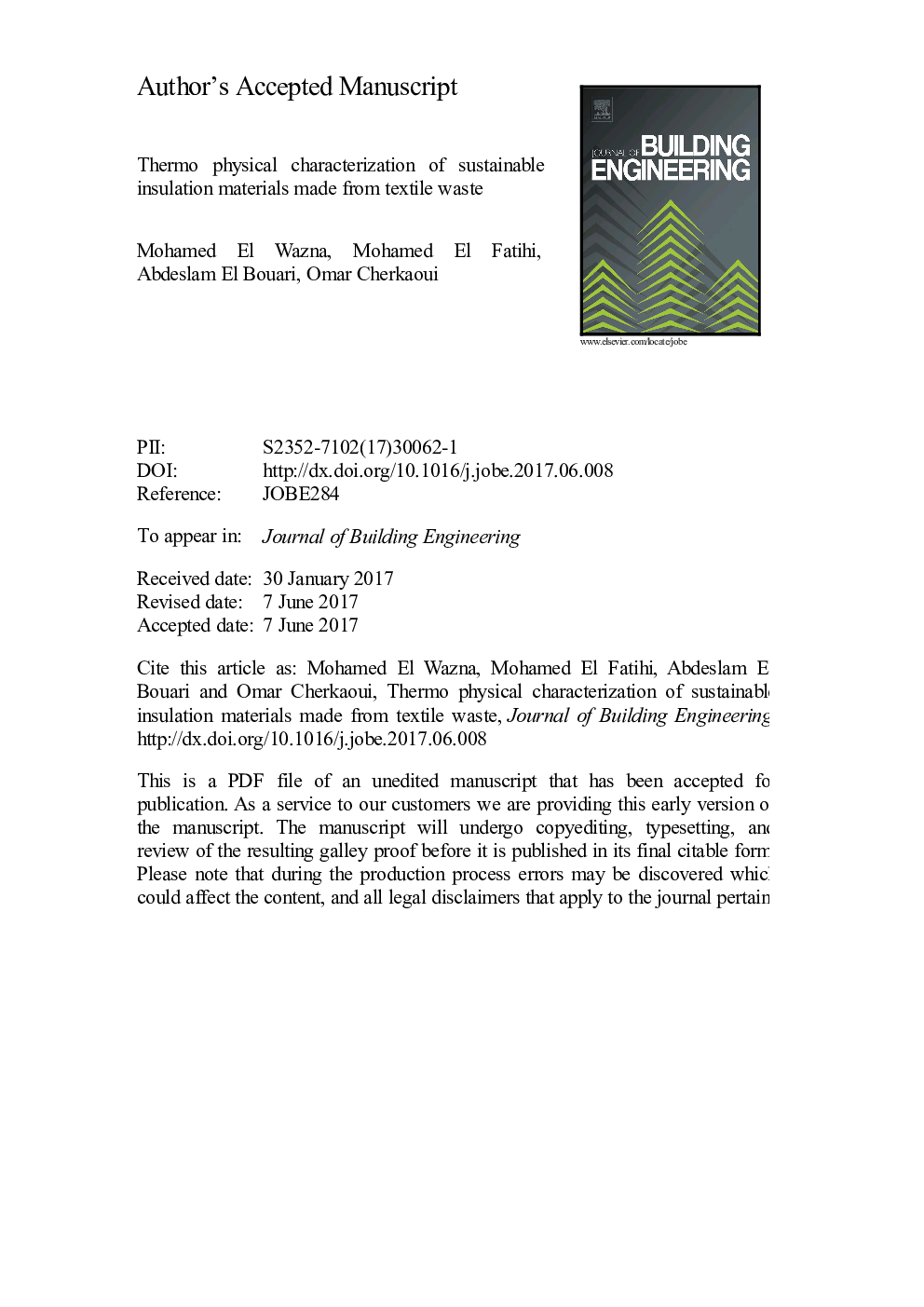| Article ID | Journal | Published Year | Pages | File Type |
|---|---|---|---|---|
| 4923156 | Journal of Building Engineering | 2017 | 18 Pages |
Abstract
The aim of this work is to evaluate the potential of textile waste application in building insulation in the form of a nonwoven fabric, and also to investigate the effects of porosity and density on the properties of needle-punched non-woven fabrics. For this purpose, four nonwoven waste based on acrylic and wool, termed here as A1, A2, W1 and W2, were prepared using needle punched technique and tested in terms of physical-microstructural properties. The thermal conductivity of A1, A2, W1 and W2 were 0.0350 W/(m K), 0.0335 W/(m K), 0.0348 W/(m K) and 0.0339 W/(m K) respectively. In addition, air permeability was found satisfactory for all nonwoven fabrics with values ranging from 600 to 616 L/(m2 s) for acrylic and 950-1033 L/(m2 s) for wool samples. The dependency of the thermal conductivity λ and the air permeability k on the porosity and density was investigated. It is observed that the thermal conductivity and the air permeability of non-woven fabrics decreases with increasing porosity, and increases linearly with density. The measured properties showed that the nonwoven fabrics present good insulating properties compared to the traditional insulation materials (glass wool, mineral wool etc.). Therefore the non-woven textile waste insulation may provide a promising solution for building insulations.
Keywords
Related Topics
Physical Sciences and Engineering
Engineering
Civil and Structural Engineering
Authors
Mohamed El Wazna, Mohamed El Fatihi, Abdeslam El Bouari, Omar Cherkaoui,
